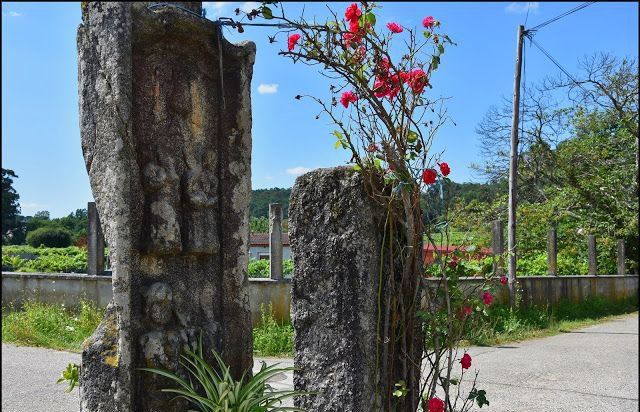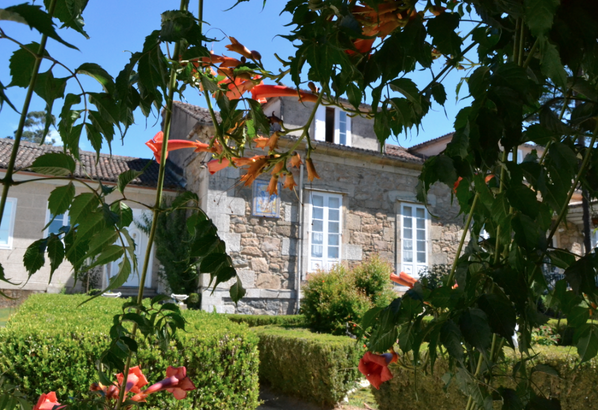Parish of "OLEIROS"
The Oleiros territory runs parallel to the Miño river. Pesqueiras, old stone constructions used to capture the lamprey, are preserved in its bed.
The river favored the settlement of the population in the parish of Oleiros since ancient times. Among the traces found of our ancestors, a field of mamoas stands out, described by Father Sarmiento in the 18th century and currently very destroyed by human action, and fragments of Roman tegulas were found in the Teáns estate.
El Miño provides the residents of Oleiros and other parishes on its banks with abundant fishing resources. In addition, there is talk of the existence of a passing boat to the Portuguese town of Monçao.
Until the beginning of the 19th century Oleiros was divided into two parishes: "Santa Columba de Pedra Furada" and that of "Santa María de Oleiros". The union of both would take place during the pontificate of the Tudense bishop Juan García Benito.
On the banks of the Miño river there is a spring with sulphurous waters, as highlighted by the doctor and scholar Nicolás Taboada Leal in 1877. Today, this spring has been recovered by the Salvaterra Council for public use.
Parish Church of Santa María de Oleiros
Pazo de Teáns
Remains of the Viacrucis de Oleiros
Cruceiro of the atrium of the Parish Church
Cruceiro of the Oleiros cemetery
Cruceiro do Chan da Igrexa
Cruceiro da Aldea, Pedra Furada
Cruceiro da Costa
High cross of Outeiro
High cross lying on the floor of the atrium of the Church of Oleiros
Chestplate of Souls from Costa
Chestplate of Souls of Coto
Breastplate of souls under canopy of Outeiro
Chest of souls of the Saint
Localización
Concello:
Salvaterra de Miño
Coordenadas: Lat. 42.1150 Lon. -8.4933
Date of interest
| EXTENSION | POPULATION | PATTERN |
|---|---|---|
| 3,9 Km² | 414 | Santa Marina |










